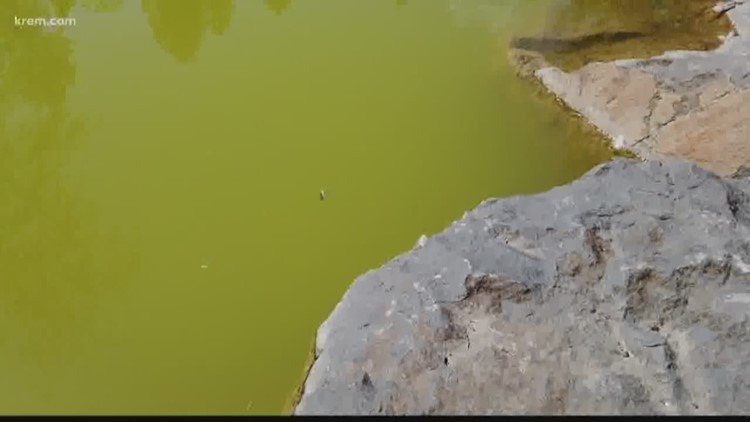NEWMAN LAKE, Wash. — Blue-green algae blooms have been found in Newman Lake, stopping recreational activities at the lake until further notice, according to the Spokane Regional Health District (SRHD).
Newman Lake test results taken this week revealed potentially harmful toxicity levels for cyanobacteria, also known as a harmful algae bloom (HAB) or blue-green algae.
"We are lucky to have so many beautiful lakes and rivers to enjoy in our area,” Mike LaScuola, SRHD environmental health specialist said. “We just want to make sure that everybody is prepared to choose the safest location and avoid any risks to themselves, loved ones, and pets.”
Currently, there is no known illness associated with the algae among people or animals, but the Washington State Department of Health’s Recreational Guidelines, Spokane County and SRHD, advised to stop the recreation at Newman Lake until further notice.
Extreme heat this summer in Washington and lower than normal water levels are associated to create an ideal environment for organisms that grow and multiply easily, affecting humans and pets.
Algae toxin's common symptoms vary in people depending on the exposure. Some common symptoms include rashes, hives, diarrhea, vomiting, coughing, and wheezing. More severe symptoms could affect the liver and nervous system and may result from ingestion of water, the press release said.
People are allow to eat the fish from the Newman Lake if they choose to, but it is recommended that they remove all fat, skin and organs before cooking, as toxins are more likely to collect in those tissues.
The SRHD will continue testing and monitoring the water each week to confirm the presence of toxic blue-green algae. They will put signs at the lake once toxicity levels are within acceptable limits, the press release said.
The SRHD encouraged people to take the following precautions when choosing a body of water for recreation:
- Pay attention to signage and do not swim in water that is under a health advisory or is listed as having a toxic algae bloom on the Washington State toxic algae tracking site.
- Avoid water that is stagnant, has dead fish or other aquatic animals in it, or contains large amounts of algae.
- Do not swim or play in water near sewer or other discharge pipes or in areas that are frequented by livestock or other land animals.
- Do not swim near or play in marshy areas where snails are commonly found.
If somebody suspects water contains a toxic algae bloom, they are encouraged to visit the Washington State toxic algae tracking site for directions on how to report it.
For more information on harmful algae blooms visit SRHD’s website.



